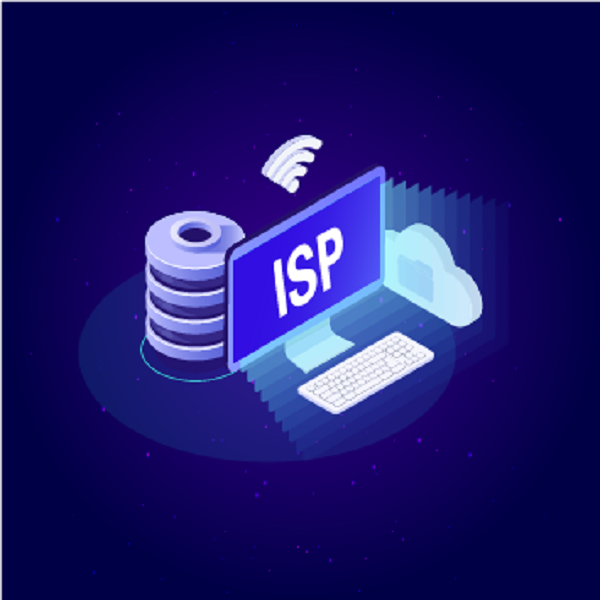Residential Proxies
Allowlisted 200M+ IPs from real ISP. Managed/obtained proxies via dashboard.

Proxies
Residential Proxies
Allowlisted 200M+ IPs from real ISP. Managed/obtained proxies via dashboard.
Residential (Socks5) Proxies
Over 200 million real IPs in 190+ locations,
Unlimited Residential Proxies
Use stable, fast, and furious 700K+ datacenter IPs worldwide.
Static Residential proxies
Long-lasting dedicated proxy, non-rotating residential proxy
Dedicated Datacenter Proxies
Use stable, fast, and furious 700K+ datacenter IPs worldwide.

Web Unblocker
View content as a real user with the help of ABC proxy's dynamic fingerprinting technology.
Proxies
API
Proxy list is generated through an API link and applied to compatible programs after whitelist IP authorization
User+Pass Auth
Create credential freely and use rotating proxies on any device or software without allowlisting IP
Proxy Manager
Manage all proxies using APM interface

Proxies
Residential Proxies
Allowlisted 200M+ IPs from real ISP. Managed/obtained proxies via dashboard.
Starts from
$0.77/ GB
Residential (Socks5) Proxies
Over 200 million real IPs in 190+ locations,
Starts from
$0.045/ IP
Unlimited Residential Proxies
Use stable, fast, and furious 700K+ datacenter IPs worldwide.
Starts from
$79/ Day
Rotating ISP Proxies
ABCProxy's Rotating ISP Proxies guarantee long session time.
Starts from
$0.77/ GB
Static Residential proxies
Long-lasting dedicated proxy, non-rotating residential proxy
Starts from
$5/MONTH
Dedicated Datacenter Proxies
Use stable, fast, and furious 700K+ datacenter IPs worldwide.
Starts from
$4.5/MONTH
Knowledge Base
English
繁體中文
Русский
Indonesia
Português
Español
بالعربية


This article analyzes the core technical principles and application scenarios of China's proxy servers, explores the core value of online proxy services in data security and business expansion, and provides professional solution references for enterprises and developers.
1. Technical architecture and operation mechanism of proxy server
As a network traffic transfer node, the proxy server hides the user's true identity through IP address masquerading and data packet forwarding. Modern proxy systems adopt a layered architecture design, including a traffic scheduling layer, a protocol conversion layer, and a security verification layer. The traffic scheduling layer uses an intelligent routing algorithm to select the optimal path based on real-time network conditions, and the delay fluctuation is controlled within 20 milliseconds. The protocol conversion layer supports automatic adaptation of multiple protocols such as HTTP/HTTPS/SOCKS5 to ensure seamless connection with the target server.
The authentication system uses a dual verification mechanism, which includes both IP whitelist filtering and dynamic token authentication. The log system only retains necessary metadata, and all user behavior data is processed in memory, with a storage period of no more than 24 hours. This design minimizes the risk of privacy leakage while ensuring service availability.
2. The three core values of online agency services
1. Improved data collection efficiency
Dynamic residential proxies can simulate the geographic location and network environment of real users, breaking through geographical restrictions to obtain accurate data. The IP rotation frequency can be configured to thousands of times per minute, ensuring that data capture behavior is difficult to identify and intercept. For scenarios that require continuous monitoring, static ISP proxies provide long-term and stable connection channels.
2. Enhanced network security
The traffic encryption tunnel uses the TLS 1.3 protocol, and the data transmission process is end-to-end encrypted. The malicious attack detection system analyzes traffic characteristics in real time and automatically intercepts threats such as SQL injection and XSS attacks. When abnormal behavior is detected, the system can switch to a backup node within 100 milliseconds.
3. Business continuity assurance
Distributed proxy nodes are deployed in multiple backbone network rooms, and a single node failure does not affect the overall service availability. The intelligent load balancer dynamically allocates bandwidth resources according to business priorities, and the key business traffic priority guarantee mechanism can reduce the packet loss rate to below 0.1%.
3. Four key scenarios for enterprise applications
1. Global market research
By using geolocation proxys to obtain consumer behavior data in different regions, price monitoring accuracy can be updated in minutes. The multi-threaded collection architecture supports the processing of hundreds of data sources at the same time, and the efficiency of structured data output is increased by 80%.
2. Social media operation management
Account fingerprint simulation technology combined with dynamic proxy IP can effectively circumvent the risk control mechanism of the platform. The content publishing system can configure IP switching strategies to ensure the authenticity of geographical distribution of different account login behaviors.
3. Advertising effectiveness verification
The real device environment simulation system combines residential proxy IP to accurately restore the advertising display form from the perspective of end users. The verification system can identify 12 types of abnormal traffic including false display and click hijacking.
4. Cloud service performance testing
The global node network simulates real user access paths and generates multi-dimensional latency heat maps. The stress test module can initiate tens of thousands of concurrent requests per second to accurately locate service bottlenecks.
4. Five evaluation dimensions of technology selection
1. Node coverage density
High-quality service providers should deploy at least 500 backbone nodes in major economic zones, and have edge node coverage in second- and third-tier cities. The delay between nodes should be stable within 50 milliseconds, and the packet loss rate should not exceed 0.5%.
2. Protocol compatibility
In addition to the basic HTTP protocol, new protocols such as WebSocket persistent connection and gRPC need to be supported. The IPv6 transition plan requires dual-stack support to ensure the forward-looking nature of the technology.
3. Traffic management accuracy
The bandwidth allocation granularity must reach 1Mbps level, supporting automatic expansion of burst traffic. The traffic statistics system should provide multi-dimensional analysis reports by project, IP, and time period.
4. Security protection strength
It must have DDoS protection capabilities to resist at least 500Gbps of traffic attacks. The data leakage protection system must be ISO 27001 certified, and the key management system must comply with the FIPS 140-2 standard.
5. Operation and maintenance response speed
The automatic fault switching mechanism should take effect within 200 milliseconds, and the technical support team should provide 24/7 Chinese and English services. The monitoring system should achieve 99.99% indicator coverage.
5. Three major technological trends in industry development
1. AI-driven intelligent scheduling
The machine learning model analyzes network quality data in real time and predicts the optimal node selection. The adaptive algorithm can automatically adjust the TCP window size and retransmission strategy according to the service type, improving transmission efficiency by 40%.
2. Edge computing integration
Lightweight computing units are deployed on proxy nodes to implement data preprocessing and desensitization. In the video stream processing scenario, edge nodes can directly complete transcoding and compression, reducing bandwidth consumption by 60%.
3. Zero Trust Architecture Integration
Dynamic trust evaluation based on user behavior, identity authentication for each request. Micro-isolation technology completely isolates different business flows, and even a single point of breach cannot move laterally.
As a professional proxy IP service provider, abcproxy provides a variety of high-quality proxy IP products, including residential proxy, data center proxy, static ISP proxy, Socks5 proxy, unlimited residential proxy, suitable for a variety of application scenarios. If you are looking for a reliable proxy IP service, welcome to visit the abcproxy official website for more details.
Featured Posts
Popular Products
Residential Proxies
Allowlisted 200M+ IPs from real ISP. Managed/obtained proxies via dashboard.
Residential (Socks5) Proxies
Over 200 million real IPs in 190+ locations,
Unlimited Residential Proxies
Use stable, fast, and furious 700K+ datacenter IPs worldwide.
Rotating ISP Proxies
ABCProxy's Rotating ISP Proxies guarantee long session time.
Residential (Socks5) Proxies
Long-lasting dedicated proxy, non-rotating residential proxy
Dedicated Datacenter Proxies
Use stable, fast, and furious 700K+ datacenter IPs worldwide.
Web Unblocker
View content as a real user with the help of ABC proxy's dynamic fingerprinting technology.
Related articles

How to get data using BeautifulSoup
This article discusses how to use BeautifulSoup to obtain data, and introduces the important role of proxy IP in web page collection. It recommends the use of abcproxy's high-quality proxy IP products.

How to use Batchdata to optimize large-scale data processing
This article analyzes the core value and technical implementation path of Batchdata, explores how to improve the efficiency and security of batch data processing through proxy IP services, and provides practical guidance for enterprise-level data management.